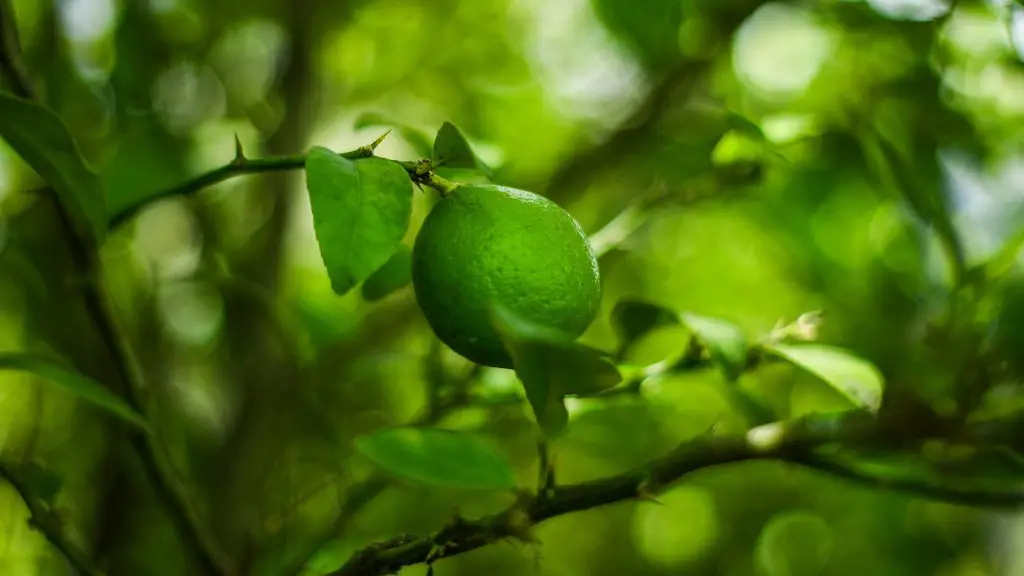Avocado trees can produce fruit when grown in a pot but there are several factors to consider before attempting to cultivate an avocado tree in a pot. The size of the pot and the soil type should be taken into consideration, as these two factors can greatly influence the chances of successfully producing fruit.
If a pot is too small, the avocado tree will struggle to reach its full potential and therefore won’t be able to produce a full crop of fruit. Pots that are too big on the other hand can cause the roots of the tree to become densely packed and unable to expand, affecting the tree’s overall health and production of fruit. For this reason, it is important to use a pot that is of a suitable size for the variety of avocado tree you are planting.
The type of soil you use is also vitally important when it comes to cultivating an avocado tree in a pot. Well-drained, organic soil is essential as it will allow the roots to access the necessary nutrients to grow and eventually produce fruit. Avocado trees will not thrive in soils that are too acidic or alkaline, so it is important to test the pH level of the soil before planting.
A pot that is full of good quality soil and the correct size can help to provide the tree with the necessary nutrients and air pockets needed for the roots to grow. Furthermore, when grown in the right conditions, avocado trees can produce fruit up to two years after planting.
However, with that being said, it is still possible to have an avocado tree in a pot that fails to produce fruit. This can be attributed to a number of environmental and growing conditions, such as not providing enough soil or water, or the presence of too much shade. It is important to research the particular trees requirements before attempting to grow them in a pot.
Additionally, avocado trees can be sensitive to cold periods and they do not appreciate temperatures that remain consistently below 15°C. If the temperature falls too low, the tree can become damaged and it may not be able to produce fruit at all. Therefore, it is important to monitor the temperatures and be ready to take action if it becomes too cold.
All in all, it is possible to grow an avocado tree in a pot and produce fruit. It is important, however, to ensure the pot is of the right size, you use the correct soil and that you are aware of the environmental conditions in which the tree is growing.
Pruning
Once you have established an avocado tree in a pot, regular pruning is necessary to keep the tree healthy and productive. Pruning helps to encourage growth, reduce the chances of diseases, and improve the overall structure of the tree. The first major pruning should take place 12 to 18 months post-planting, with regular prunings every 6 to 12 months thereafter.
When pruning an avocado tree in a pot, it is important to be aware of the location of the active growth nodes. These nodes are found in the branches closest to the outer edge of the canopy and are responsible for producing the most new shoots and leaves. Pruning in the wrong places can actually cause more harm than good and must be avoided.
The next step is to remove any dead, damaged or diseased branches, as well as those that are crossing or rubbing against each other. For further information, it can be beneficial to refer to a pruning guide tailored towards avocado trees. This guide will provide valuable advice on how to correctly prune your avocado tree.
Finally, it is important to remember that when pruning an avocado tree in a pot, it is best to err on the side of caution. If in doubt, it is always best to avoid pruning as there is always a risk of removing too much and negatively affecting the health of the tree.
Fertiliser
Avocado trees that are planted in poor soil may require fertiliser in order for them to reach their full potential and eventually produce fruit. Under these circumstances, it is recommended to use a generally balanced liquid fertiliser every two weeks, starting two weeks after planting.
Additionally, avocado trees that are growing in pots can benefit from the use of a potash-based fertiliser. Potassium is essential for producing quality fruit, as it helps to regulate the trees absorption of other nutrients such as phosphorous, nitrogen and magnesium.
However, it is important to be aware of over-fertilising as this can lead to burnt or yellowed leaves, which can be a sign of too much nitrogen and potassium in the soil. For the best results, it is a good idea to have your soil tested before using a fertiliser, so you have a better understanding of what nutrients are needed and in what amounts.
When using a fertiliser on an avocado tree planted in a pot, it is also important to remember that it needs to be applied carefully. Too much can be just as damaging as too little, and runoff water can cause damage to the surrounding environment.
In conclusion, the general rule when it comes to fertilising an avocado tree planted in a pot is to start out slow and gradually increase the amount of fertiliser being used. This will help to ensure that the roots of the tree are not overwhelmed with too much fertiliser.
Weather
Avocado trees need a warm and dry climate in order to produce fruit. In tropical regions, temperatures usually range between 16-25°C and there is usually sufficient rainfall throughout the seasons to help ensure the tree is able to thrive.
In some cases, temperatures may drop and require additional protection for the tree. Heaters and bubble wraps can be beneficial during the winter months in order to help regulate the temperature and protect the tree from the elements.
Additionally, it is important to ensure that the container which the tree is planted in has a good drainage system, as waterlogged soil can lead to root rot and cause a whole host of problems for the tree.
When it comes to heat, the more intense the sun the better. Avocado trees will do best when provided with full sun exposure for at least six hours a day. Sun protection, such as shade cloth, can be beneficial in preventing the leaves from burning and in keeping the root system from overheating.
Finally, it is also important to make sure that the root system is kept moist throughout the year in order for the tree to remain healthy. During the warmer months, this may require additional watering to ensure the soil does not dry out.
Fruit Pollination
Since avocado trees are self-pollinating, a single tree can produce fruit without the presence of other trees. This means that a single avocado tree in a pot has the potential to produce a good harvest of fruit.
Additionally, hand-pollination can be beneficial in helping the trees to achieve higher yields. Hand-pollination involves manually transferring the pollen from one flower to another until the desired amount of fruit has been produced. This technique does come with an additional cost but it can be useful in ensuring a good harvest.
In some cases, it may also be beneficial to have more than one tree growing in the same pot. This means that the trees can benefit from cross-pollination and potentially increase their yields. However, it is important to remember that multiple trees may require more soil and water, so a larger pot may be required in order to accommodate this.
In conclusion, hand-pollination and cross-pollination can be beneficial techniques when it comes to improving the yield of an avocado tree in a pot. However, if multiple trees are desired in the same pot, then additional preparations may need to be made in order to ensure sufficient space and resources for the trees.
Harvesting
Harvesting fruit from an avocado tree planted in a pot is much like harvesting fruit from a tree growing in the ground, in that it is important to be careful with the fruit and to avoid bruising.
Avocado fruit is ripe when it is has a slight give when pressed gently with the thumb, but is still slightly firm. If the fruit has become overly soft and squishy, it may be overripe and will not taste as good. If the fruit is too hard, it is best to leave it on the tree as it will not ripen properly and will never reach its full flavour potential.
It is also important to remember not to leave the fruit on the tree for too long, as the exposure to the elements can cause it to become soft and unappetising. The best way to store an avocado is to harvest it when it is ripe and then keep it in the fridge in a plastic bag. This will slow the ripening process and prevent the fruit from spoiling too quickly.
In addition, it is also important to remember that, when harvesting fruit from an avocado tree planted in a pot, there are additional considerations to take into account. For example, the fruit may be more delicate due to the smaller root system and therefore more care is needed to make sure the fruit isn’t damaged when harvesting.
To summarise, harvesting an avocado tree in a pot requires careful consideration of when the fruit is ripe, as well as care when handling the fruit in order to avoid bruising. Additionally, it is important to remember to store the fruit correctly in order to prevent it from spoiling too quickly.




